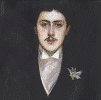Modern Languages and Literatures, Department of
Date of this Version
1983
Citation
Zeitschrift für französische Sprache und Literatur (1983) 93(1): 14-24.
Abstract
France's most prominent philosopher of the second half of the seventeenth century is reputed to be no friend of rhetoric. Bernard Tocanne declares, "C'est chez Malebranche que se mettent en place tous les arguments mis en oeuvre par les adversaires de la rhétorique à la fin du siècle," and Peter France calls him "a philosopher who had no love for rhetoric." The basis of such judgments is the Oratorian's attacks in the Recherche de la vérité (1674) against the use of the imagination and passions in the eloquence of Tertullian, Seneca, and Montaigne. Malebranche's critique is symptomatic of the legacy of Descartes' hostility toward rhetoric. The author of the Discours de la méthode had little use for the ancient discipline, scorning the degrees of probability accepted by rhetoricians as proof in favor of the évidence of clear and distinct ideas. Likewise, in theory at least, he saw no need for the rhetorician's concern for adapting his message to his audience: as Peter France has put it, Descartes' "first and constant notion of persuasion" is that "he will state the truth firmly and clearly and everyone will agree."
However, it is an injustice to limit Malebranche's views on rhetoric to an amplification of the Cartesian stance. His other intellectual guide was Augustine, whose abandonment of his role as a professional rhetorician upon his conversion, in no way signaled a lack of interest in rhetoric. To be sure, Malebranche condemns what I will call a "rhetoric of imitation," which appeals to the body, and which is illustrated in its most potent form by "la communication contagieuse des imaginations fortes" (I. 320). Yet he also describes a second, more authentic model of persuasion, a "rhetoric of attention" which directs the mind to the Divine Reason in whom men see all truth. He depicts this method in action in dialogues like the Conversations chrétiennes (1677), the Entretiens sur la metaphysique et sur la religion (1688), and the Méditations chrétiennes et métaphysiques (1683). These works, which envisage persuasion taking place under ideal conditions, contain both theoretical discussions of the communication process and practical advice on how to convert the obdurate.
Readers familiar with other major thinkers of the period such as Pascal and Arnauld will recognize points of similarity. I believe they will also sense that, although Malebranche never attempted a comprehensive assessment of the art, his views on rhetoric and persuasion have a unique depth and subtlety due to his success in grounding his rhetorical principles in a coherent analysis of the operation of the mind and its relation to the body. My goal in bringing together his scattered comments on rhetoric is not so much to study the sources of his views as to examine the epistemological and linguistic foundation of the two modes of persuasion he describes. We will see that while Cartesian psycho-physiology furnished much of the rationale for his attacks against "fausse éloquence" (II. 259) of the rhetoric of imitation, his own theory of attention, reinforced by his concept of the Incarnation and the mind's union with God, made possible the more positive view illustrated in the dialogues.


Comments
Copyright 1983, Franz Steiner Verlag. Used by permission.